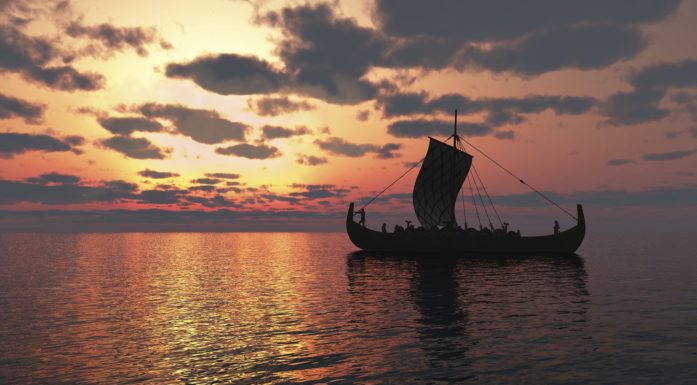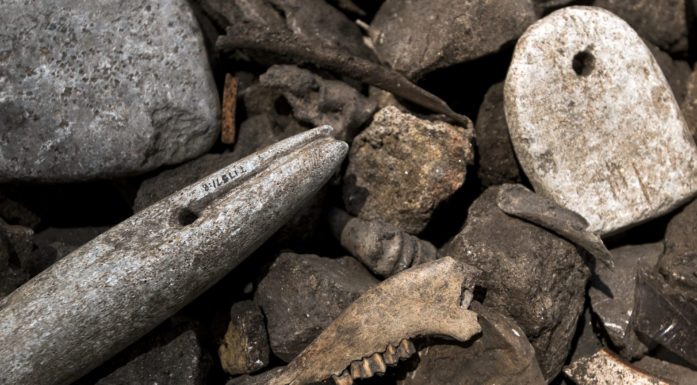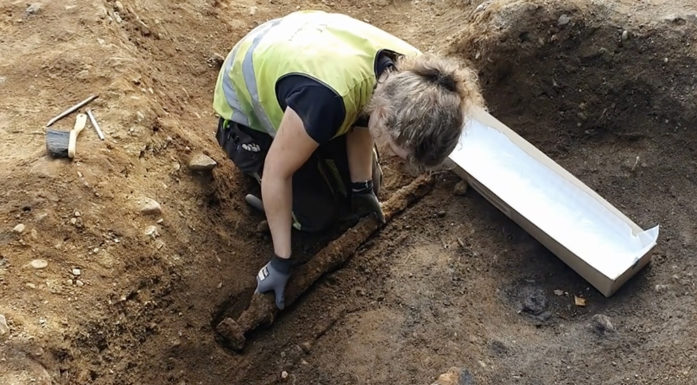Viking film with YouTube world premiere
Threats and battle cries in the Old Norse language mix with the sound of sword against sword and swords meeting bodies. The Viking film Trace is now being relaunched in a new version.
Markus Dahlslett made the Viking film Trace a few years ago for his master’s thesis in film production at NTNU. The film premiered at Trondheim’s Kosmorama International Film Festival in 2016 and has been shown at several other film festivals to positive reviews.
Now Dahlslett and the film team have launched a new version of the film on YouTube.
“We’ve been working on a new and improved version. The film has been updated with new footage, remastered sound, higher resolution and new music. Now we’re ready for the film’s public launch on YouTube and a long-awaited online world premiere!” says Dahlslett.
Internationally, the Vikings and the Viking Age are popular material, as seen in different popular TV series set in Viking times.
Language of the Vikings used
Dahlslett has striven to create authenticity in the film and to recreate the period in a credible way. To that end, he decided to have the characters speak Old Norse – or Old Norwegian – the language of the Vikings.
“I wanted to depict the scenes as authentically as possible, not only in terms of props but also language. I think having the actors use the language that the Vikings actually spoke makes the spirit of the Viking Age more believable and alive, and supports the feeling of going back in time more,” he says.
Creating a believable picture of the times
In his master’s thesis, Dahlslett described how production design is one of the most important tools for capturing the spirit of an earlier era on film. It includes costume design, prop choices, special effects, movie set building, location selection, lighting and the use of makeup.
Here you can read Dahlslett’s entire master’s thesis Et spor av fortiden (“A trace of the past”, in Norwegian).
Dahlslett has continued to dive into the theme of the Viking Age on film and has just finished an assignment as project coordinator for NRK’s new documentary series on Olav Haraldsson by Kristofer Hivju and Gry Molvær.
He also teaches pupils in the Media and Communication programme at Charlottenlund upper secondary school in Trondheim.
Article continues below picture.

Ladehirden is an organization in Trondheim for people who engage in stage fighting as a hobby and passion. They have provided actors and combat skills for the film’s battle scenes. Photo: Torbjørn Buvarp
Recreating the past with digital effects
Matte painting was one of the production tools that the filmmaker employed to create a Viking village. Concept artist Stian Dahlslett used Photoshop for the matte painting that he contributed.
The starting point for the painting was a landscape picture from the Lofoten islands. Photographs of cabins, houses, earthworks and boats from various folk museums in Europe were inserted into the landscape to create an accurate Viking period village. Smoke from pipes and haze from the sea was animated, and through the use of digital zoom movement and film grain, the village appears as if it had actually been filmed.
“One advantage of using matte paintings is that you also have full control over the lighting, weather conditions and how you want the whole scene to look,” Dahlslett says.
Tattooed Vikings
Dahlslett also chose to give the Vikings tattoos. Tattoos haven’t been used very much in Viking films before, but Dahlslett found historical evidence that the Vikings probably used them.
“Arab chronicler and author Ahmad ibn Fadlan describes Vikings from Scandinavia that he met on his travels in Russia in the year 992, who were tattooed right down to their fingertips,” Dahlslett says.
“Otherwise, we’ve found various remains of tattooed people from earlier times, evidence that getting tattooed is an old European tradition that originated long before the Viking Age. The 5000-year-old Austrian Ötzi, who was found frozen in the Alps, is an example. Julius Caesar describes in his book The Gallic Wars, Book 5 that the Picts from the north of Scotland also had tattoos,” says Dahlslett.
The struggle for a better future
The story’s protaganist is Baldr, a Viking who has acquired knowledge from distant lands and empires. He brings his new knowledge in shipping, cartography, medicine, languages and engineering home to Scandinavia to help his people create a better future.
“The Vikings who went out and discovered the world had no choice but to learn a lot. They experienced different cultures and some of them worked for long periods as mercenaries for the Byzantine emperors,” Dahlslett says.
Back in his homeland, Baldr encounters the Viking Gorm and his clan who fear the unknown and want to annihilate bearers of knowledge. It is a battle for survival and hope for a better future. The encounter between Baldr and Gorm leads to fierce battle scenes.
You can read more about the film in this article: Líða skaltú ok deyja! — May you suffer and die!
No mercy is shown in the Viking film Trace, and threats fly in the Vikings’ own language.




